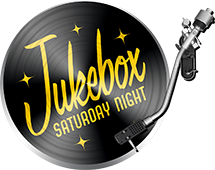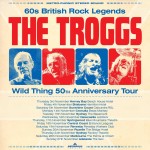3 Important Moments In The Early Career Of James Brown
At Jukebox Saturday Night, we believe that great music transcends generations, and one of the best examples the industry has blessed the world with is James Brown. While it’s been almost two decades since the classic soul icon joined R’n’R heaven, many still listen to and are inspired by their favourite James Brown albums to this day.
In the beginning, though, he was just another artist trying to stand out in the crowd of aspiring stars. As everyone knows, he eventually did, and here are his three early career moves that led to that success
#1: Joining the Famous Flames
The first decision that kickstarted his professional career was joining the Famous Flames in 1954. While initially an a cappella gospel group, the band evolved during Brown’s first years into a rhythm and blues act.
They had a reputation as a good live act and played many parties at venues near colleges. However, it wasn’t until Brown decided to make a song out of a title that fellow iconic musician Little Richard wrote on a napkin – ‘Please please please’ – that the group saw its first taste of major success.
‘Please please please’ was the group’s first hit, making it to the number six spot of the R&B charts in the summer of 1956. While this was only the beginning of his stellar career, there’s no denying that being part of this group was the bedrock of the great James Brown music legacy we look back on today.
#2: Writing ‘Try Me’
While ‘Please please please’ landed on the R&B charts, it never made it to number one. On top of that, in the years after its release, the Famous Flames didn’t manage to follow up with another hit. That is, of course, until James Brown and fellow member Johnny Terry wrote, ‘Try me’.
The track’s simple but earnest and evocative lyrics portrayed an alluring plea for a chance at love. Paired with Brown’s soaring vocals and heartfelt emotion, the song struck a chord with listeners – so much so that it eventually became the first of Brown’s many #1 R&B hits.
This success opened doors for further opportunities, setting the stage for Brown’s subsequent hits and emergence as a formidable force in the music industry.
#3: Recording Live at the Apollo
In 1962, when told that live albums wouldn’t sell well, James didn’t take no for an answer. Instead, he self-funded the performance and recording, which took place in October 1962 at the Apollo Theatre in Harlem – the perfect backdrop to reflect the vibrant energy of Brown’s shows.
It wasn’t until May 1963, the release of the Live at the Apollo album, that he’d be proven right. It spent 66 weeks on the Billboard Top Pop Albums chart, peaking at number two. The demand for the album was so high that many record stores eventually started ordering multiple cases at a time after struggling so much to keep it in stock.
But Live at the Apollo’s significance extended beyond commercial success. It also further established the James Brown Motown and R&B superstar image that people know today by capturing what studio albums couldn’t: the cathartic energy of his live performances.
There’s no doubt that this was the biggest landmark in his early years. As music critic Robert Christgau wrote in a retrospective for Rolling Stone, ‘not only did [Live at the Apollo] establish Brown as an R&B superstar and a sales force to be reckoned with, it’s [also] a time capsule, living testament of a chitlin circuit now defunct.’
Frequently Asked Questions (FAQ)
How did James Brown influence the music industry?
When it comes to the great James Brown legacy, it’s difficult to accurately capture just how monumental his influence was on music. As he evolved throughout the genres and reached new heights in his talent, performances, and musical innovations, he mesmerised the music world, prompting everyone in it to keep up with the boundaries he continued to push.
His prolific songwriting, spellbinding blends of blues, gospel, country, and more, and his mesmerising vocals earned him the title of Godfather of Soul. Brown’s talent and instincts when it came to creating fresh sounds elevated the genre, adding more depth and complexity to each new era of soul that he ushered in.
Plus, James Brown and the invention of funk music went hand in hand. You can’t talk about the roots of funk without citing him. He helped shape it by developing his signature groove, marked by an emphasised downbeat. He further cemented the genre with tracks driven by syncopated bass lines and a sense of rhythmic intensity.
In the words of Al Sharpton, who once toured with him, ‘What James Brown was to music in terms of soul and hip-hop, rap, all of that, is what Bach was to classical music. This is a guy who literally changed the music industry. He put everybody on a different beat, a different style of music. He pioneered it.’
Many in the industry still name that iconic James Brown music style as an inspiration and continue to sample his works. His influence on modern artists proves to be as significant as his impact on his peers at the time. With that said, there’s no denying that the impact of James Brown’s life and legacy truly withstands the test of time, a true mark of an undeniable star.
What are some of James Brown’s greatest hits?
Aside from ‘Try me,’ James Brown had many other singles that made it to the number one spot on the R&B charts. This includes consecutive hits, ‘I got you (I feel good)’ and ‘Papa’s got a brand new bag’, both released in 1965.
‘Papa’s got a brand new bag’ was his song that performed the best at the year-end US Billboard charts at #33. Other hits that made it to the year-end charts were funk track ‘I got the feelin’, seventies jukebox favourite ‘Get on the good foot’, and the Rocky IV theme ‘Living in America.’
Another significant sensation was his song ‘Say it loud – I’m black and I’m proud’. Not only did it peak at number one in the R&B charts, but as it addressed racism and the need for Black empowerment, it also ended up being an anthem for the civil rights movement.
What instruments did James Brown play?
James Brown mostly took the lead with his vocals, his voice being his primary instrument throughout his career. However, the artist also played several instruments in his career, including the drums, piano, organ, and harmonica.
Revisit the golden years
Whether you want to rediscover forgotten 70s bands or watch The Cowsills members perform their psychedelic pop tracks, Jukebox Saturday Night is your go-to program to tune for all things retro music. With our broadcasts of rare music video clips from the 1950s to the 1980s, from Golden Earring hits to performances of Billy Thorpe and the Aztecs, we transform your weekend into a trip down memory lane.
Catch us on Saturday nights from 7.30 p.m. to 8.30 p.m. on Foxtel, Aurora Channel 173 or during our replays on Sunday nights at 9.00 p.m. and Tuesday nights at 9.30 p.m. to relive the glory days of music.
Disclaimer: The information provided is for educational and entertainment purposes only. While we strive for accuracy, music history is often based on available documentation and interpretation.



